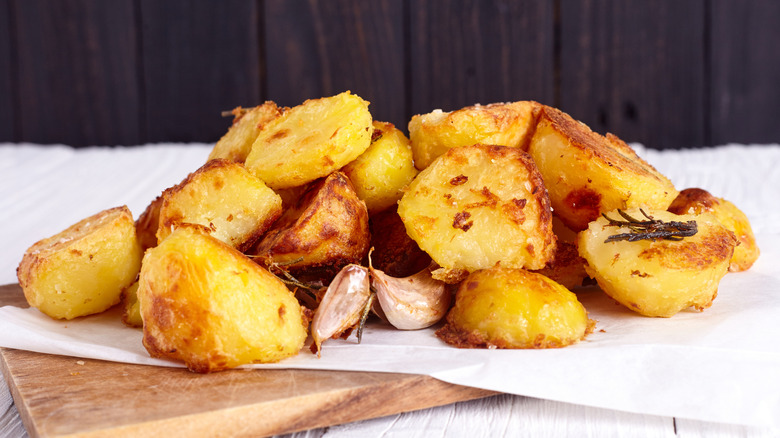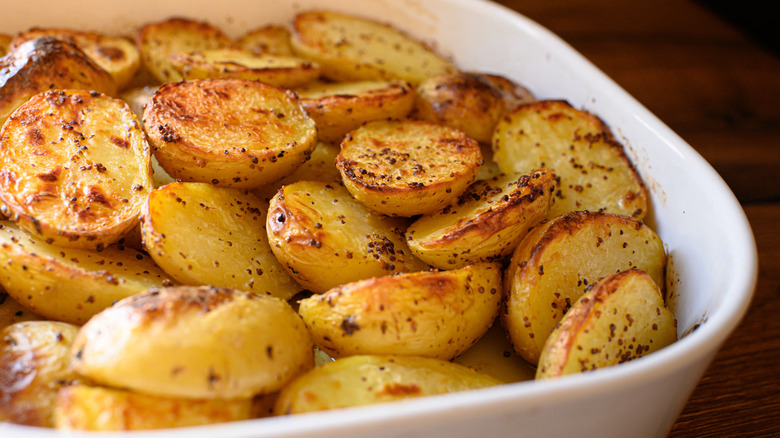The Easy British Trick For The Crispiest Roasted Potatoes
When you crave roast potatoes, odds are you want them not just crispy, but the crispiest they could possibly get. But after you've mastered cooking times, temperatures, and your preferred oil, butter, or fat, what do you do next to improve them? You maximize their surface area.
Many cooks are no strangers to the idea of parboiling — the trick of boiling vegetables just long enough to soften their outer layers while leaving their interiors firm and raw. But the British take this trick to the next level for even crispier roasted potatoes. First, peel and parboil your spuds until their exteriors are nice and mushy but a fork still can't pass easily through them. After draining them in a colander, give them a solid shake, roughing up their exterior. This creates hundreds of tiny ridges and dips in your potatoes' surfaces, drastically expanding their total surface area with very little effort.
Whereas smooth potatoes still crisp up beautifully in the oven, the more craggy the exteriors, the more roasted flavor you get. This gives you a taste-and-texture one-two punch that will have dinner guests begging for your recipe. However, while this hack alone is an incredible tool in your culinary arsenal, you shouldn't neglect all the other tricks for making potatoes extra crispy if you really want to upgrade your cooking game.
How to enhance British roasted potatoes
While the British roughing-up technique is the key to creating those beautiful, craggy surfaces, you can take it a step further. One unexpected ingredient for crispier roasted potatoes is a dash of semolina flour. This may come as a surprise, as most people associate flour coatings with deep frying, but semolina is truly something special. Coarser, darker, and more intensely flavorful than most flours, semolina's high gluten content makes it incredible at holding its shape. For the best results, preheat a cooking pan with a high-heat oil or duck fat in the oven, drop in the potatoes, and listen to them sizzle away for a cooking method that's half frying, half baking.
Like all roasted vegetables, you'll need to flip the potatoes so each side has a turn lying face down in your cooking pan. This allows the preheated fat to do its work, caramelizing the entire exterior until you're left with something as crispy on the outside as it is pillowy on the inside. You'll also need to leave the potatoes plenty of room to steam away their excess water. Failing to do so can introduce too much liquid into the cooking fat, splattering your oven and preventing them from crisping up properly.


